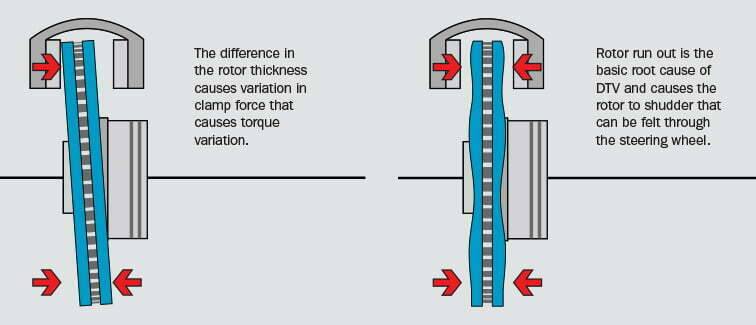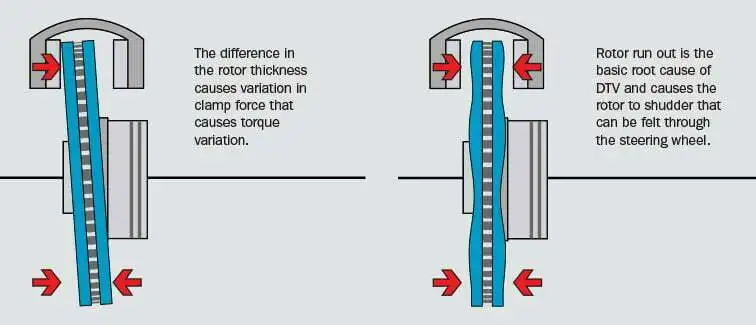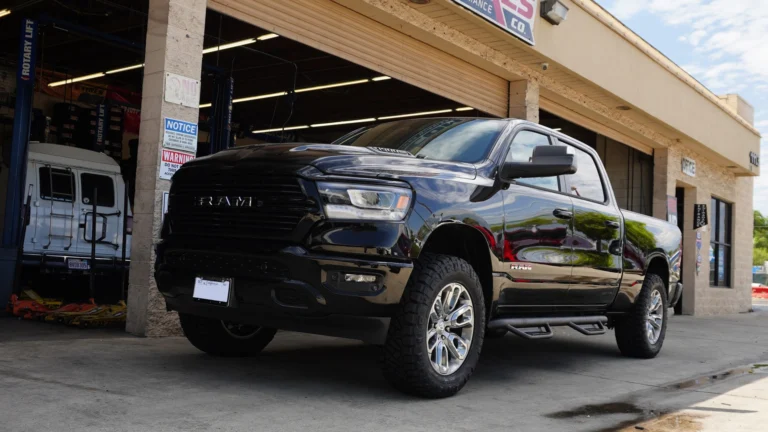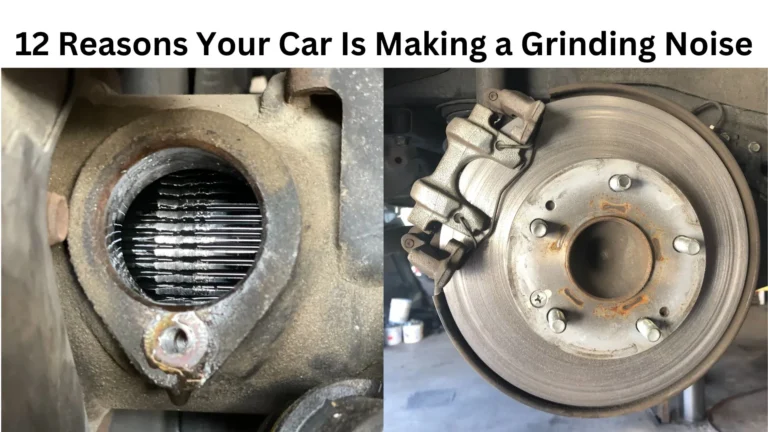As you’re coming to a stop, you feel a vibration in the brake pedal. Maybe you feel it in the steering wheel, too. A car that shakes when braking is annoying — and it can make you nervous. You don’t want to wait to fix a brake problem.
But what’s causing it? A pulsation or vibration when braking can affect stopping and handling performance. It’s a serious problem, but the cause is usually pretty easy to identify and address. You’ll want a professional mechanic to inspect your car, but let’s run down how your brakes work, and some likely causes of this problem.
How your vehicle’s brakes work
It goes without saying that brakes are important. If you can’t bring your car to a stop, you won’t be driving it. So how does this vital system work?
There are two basic types of braking systems: disc and drum. Most vehicles have disc brakes on at least one axle and many have discs all the way around.
Disc brake system components:
- Pads
- Rotors
- Calipers
- Hardware
Drum brake system components:
- Shoes
- Drums
- Wheel cylinders
- Hardware
Both types of systems have a master cylinder, where hydraulic pressure is created when you press the brake pedal. The pedal moves two pistons inside the master cylinder, which pressurizes the brake fluid. The pressurized brake fluid is then forced through a series of brake lines to the wheels.
At each wheel, the brake fluid forces a hydraulically operated caliper to push the brake pads against the rotor. In a drum brake system, hydraulic pressure causes the wheel cylinder to push the brakes shoes against the drum. Either scenario slows down the vehicle and eventually brings it to a stop.
Why your car shakes when braking
Not all brake vibration problems are actually caused by the brakes. There are a few different reasons why your vehicle may shake when braking:
- Brake rotors
- Brake drums
- Wheel bearings
- Steering and suspension components
- Get it diagnosed by a professional
Brake rotors
If your brake rotors have excessive runout — meaning they have a wobble — or they have variations in thickness, this will prevent the brake pads from being parallel to the rotor face. The pads will slip when the brakes are applied. You’ll feel this as a pulsation in the brake pedal. In many cases the steering wheel will shake, as well.
 Warped Rotor
Warped Rotor
Solution: The rotors should be repaired or replaced. To determine which route to take, the rotors should be inspected and measured. Have your mechanic visually check the rotors for damage such as cracks, scoring and heat spots, and then measure the rotor for minimum thickness, thickness variation and runout. If they still meet the manufacturer’s specifications, they can be machined and reused. But in most cases, a rotor that’s distorted enough to cause a vibration will need to be replaced.
Brake drums
Brake drums that are out-of-round can cause a brake pedal pulsation. Other symptoms include a scraping or squealing noise when you press the brake pedal.
Solution: The drums should be repaired or replaced. Have your mechanic give them a visual inspection, looking for damage such as cracks, scoring and heat spots. Any of these would indicate that you need new drums. Next, have the drums measured for out-of-round, minimum thickness and thickness variation. If they still meet the manufacturer’s specifications, they can be machined and reused. But in most cases, a drum that’s causing a vibration will need to be replaced.
Wheel bearings
Wheel bearings allow the wheels to rotate while supporting the vehicle’s weight. The brake rotor is connected to the wheel bearing hub assembly. A worn wheel bearing that has too much play will cause a vibration when braking.
Solution: Replace the worn wheel bearing or bearings. In many cases, the wheel bearing will be an integral part of the hub assembly and won’t be serviceable. The entire hub assembly will have to be replaced.
Steering and suspension components
Typically, worn steering or suspension components will cause a vibration while driving, not just when braking. However, in some instances a worn or damaged component, such as a loose control arm or damaged knuckle, may cause a vibration when braking. A bent or otherwise damaged axle shaft can have the same effect.
Solution: Have the car inspected and replace any worn or damaged suspension or steering components. You may need a wheel alignment, as well.
Get your brakes checked
Even if you don’t feel a problem (or hear one), your brakes should be inspected at least once a year. How often you need to get them replaced will vary depending on your car and your brake usage.
Remember, brakes are the most important safety feature on your car, and if something seems wrong with them, get your car inspected by a professional technician immediately.




